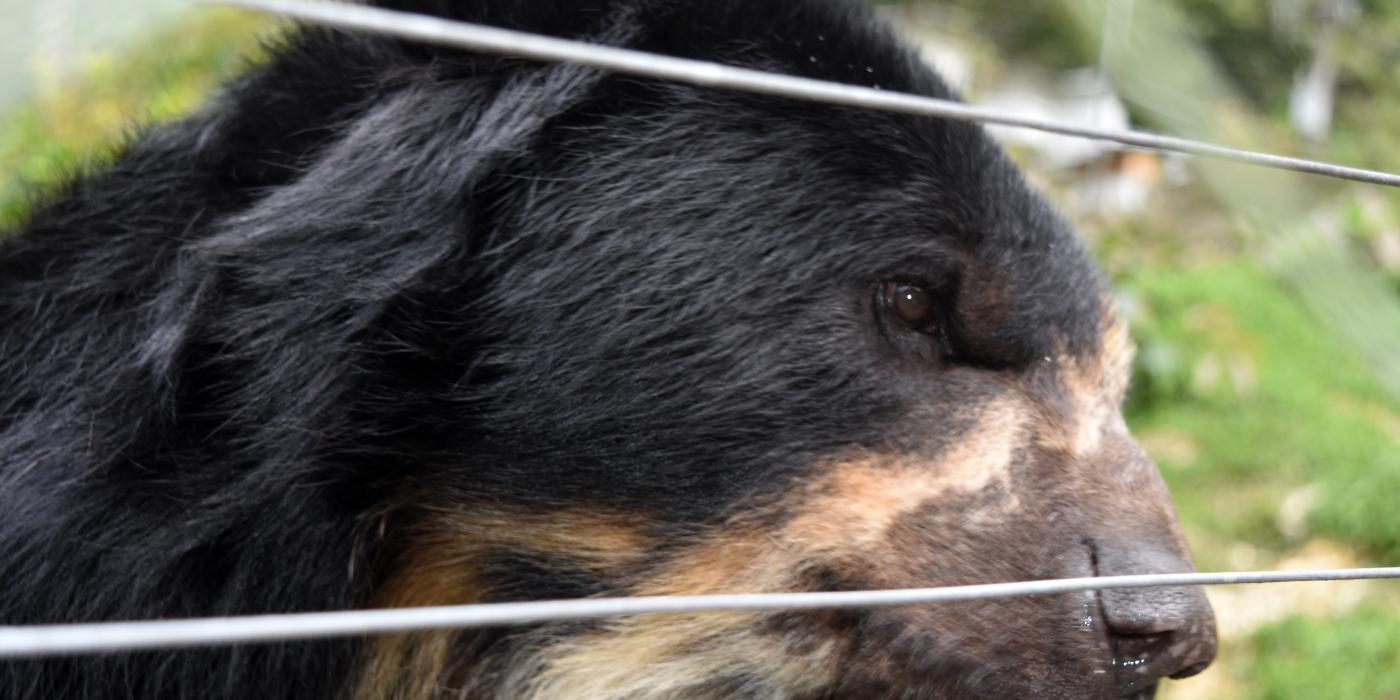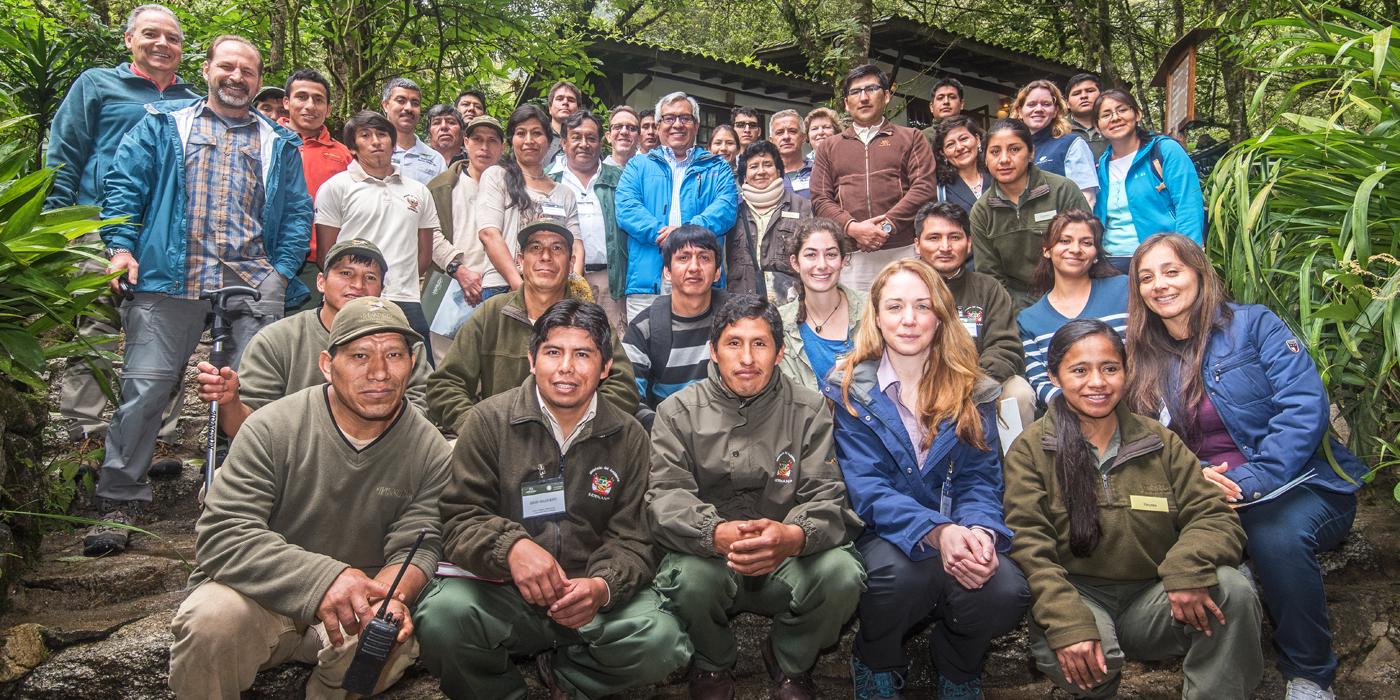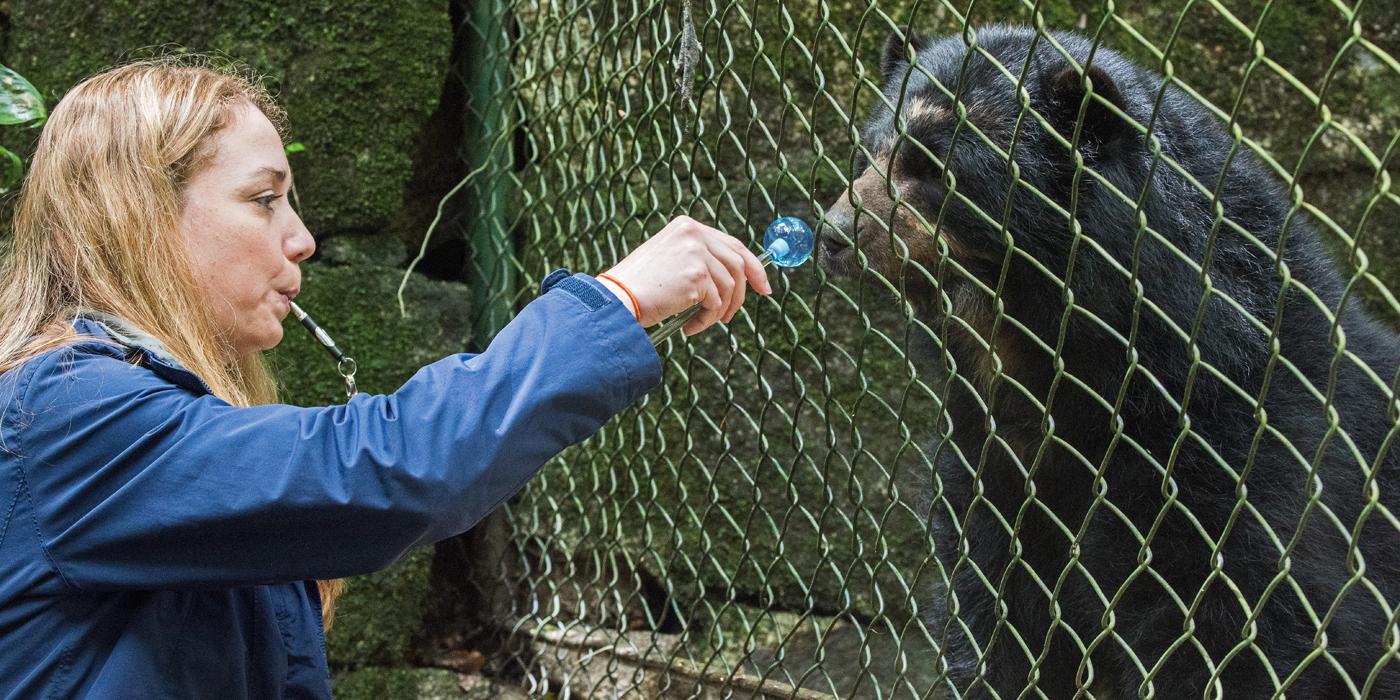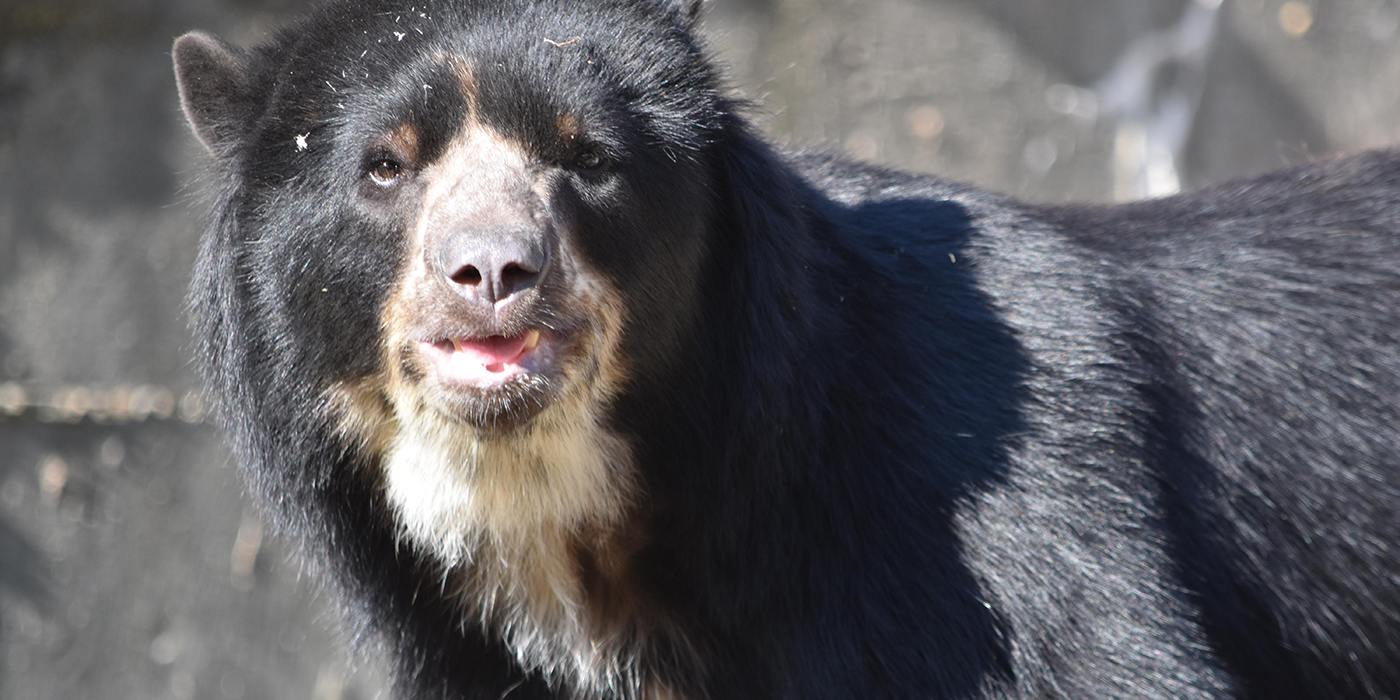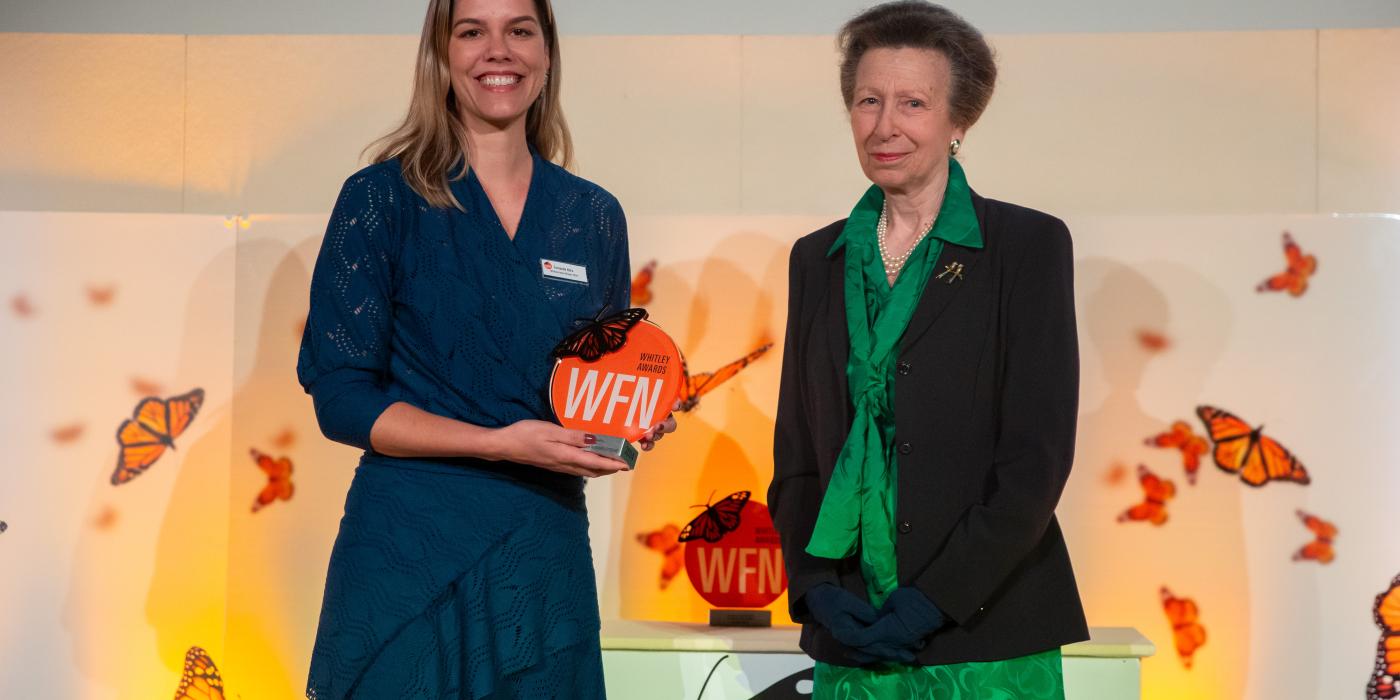An Andean Bear Adventure (Part II)
What does it take to care for an Andean bear? In March, Smithsonian’s National Zoo and Conservation Biology Institute (SCBI) staff returned to Peru—the bears’ home turf—to share their expertise. Hosted by Inkaterra Association and Peruvian Protected Area Network, the Andean Conservation Workshop brought together 40 conservation professionals from the Smithsonian, Peru, Bolivia and Columbia to exchange ideas and best practices.
Learn about the trip in this Q&A with SCBI Center for Conservation and Sustainability director Francisco Dallmeier, Zoo curator Craig Saffoe, chief veterinarian Don Neiffer, nutritionist Erin Kendrick and animal keeper Sara Colandrea.
Why did you travel to Peru?
Dallmeier: It’s been a year since Crag Saffoe, Don Neiffer and I traveled to the Machu Picchu Sanctuary. Because our last trip was such a great success, we wanted to expand the Andean Conservation Workshop and invited our colleagues from the Zoo—nutritionist Erin Kendrick and animal keeper Sara Colandrea—to join us and share their expertise. Our work at SCBI and the Zoo encompasses such a wide variety of backgrounds—in-situ and ex-situ conservation, veterinary medicine, husbandry and breeding management, nutrition, enrichment and training—that we were uniquely suited to help lead this workshop.
This year, the workshop expanded to include not only our colleagues from Peru but also Bolivia and Columbia. Many of them work at rescue and breeding facilities in the region. The bigger the network of conservationists working to protect and advance the future of this species, the more powerful our efforts will be.
What skills did you teach?
Neiffer: We reviewed the process and techniques of safely anesthetizing and performing basic physical and diagnostic exams on the bears. One bear that we examined was a 29-year-old male who was quite overweight last year. Since then, the staff at Inkaterra have made improvements to his diet, though he’s still a bit more calorically enhanced than we would like.
Kendrick: We knew early on that our colleagues had great interest in learning about nutrition, both for the bears in their care and of the wild bears. Our goal is to help optimize nutrient balance and maintain appropriate bear body condition.
I walked the course participants through the entire process of Andean bear diet analysis, review, formulation and implementation. We evaluated the bears' diets, nutritionally analyzed some native food items, and provided guidance on food choices and amounts. There was also a hands on aspect to the nutrition course where we showed our colleagues how to assess body condition during the bear’s routine exam.
What training techniques did you demonstrate?
Colandrea: Training is one of the most important aspects of my job as a keeper. At the Zoo, we practice operant conditioning, which means that animals have the choice of whether or not to participate in training sessions and are rewarded (usually with food) for doing the behavior asked of them. This helps build trust between an animal and his/her keeper. In certain situations, such as blood draws and ultrasounds, training can eliminate the need to anesthetize the animals.
One of the bears that I trained at Inkaterra was a bit nervous and skittish around people. To gain her trust, I offered her one of her favorite treats without asking for any behaviors. Once she became comfortable around me, I added a whistle. At the Zoo, we use the whistle as a cue to say “good job” and to signal that a reward of some sort is coming.
When it came time to teach her to “target”—to touch her nose to a blue plastic ball on the end of a stick—I had to get creative because she was afraid of the stick. I hid the pole in my sleeve and held the ball in my hand. Bears are naturally curious, so she leaned forward and sniffed my hand and, in turn, the target. When she did this, I blew the whistle and gave her a treat. From start to finish once I had her trust, it took her only 20 minutes to master target training!
To ask the bears for more complex behaviors, we will give them a hand signal and a verbal cue. Training communications can differ from zoo to zoo. There was another bear at Inkaterra who had a bit of training already, so I asked his keeper to show me how she asks the bear to do a behavior. While my cue for “stand up” is an upward palm from my waist area, hers was a “raise the roof” motion with one hand. I wanted our colleagues to see that the cues could be easily transitioned from one person to another. As long as our cues to “stand up” are similar (an upward motion of some sort), most bears can quickly transition if they are moved to a different facility where the cues are different.
What did you learn?
Saffoe: Our colleagues in South America have the advantage of seeing and studying Andean bears in their natural habitat. So, when it comes to bear behavior—how they navigate a habitat, what foods choices they make—we can learn a lot from them! We applied what we learned and made adjustments to our bear’s habitat and the enrichment we offer to encourage Billie Jean to use her natural behaviors.
How can international collaboration help save bears?
Kendrick: Everything we can learn about Andean bears’ diets will help us understand their food habits and nutritional needs. Our regional colleagues are helping us to identify what wild bears eat. From there, we can determine the nutritional components of those foods and create an optimal, balanced diet for the bears in human care. In future, our hope is that bears born in human care will be reintroduced into their native habitat. To best prepare them for success, they will need both a balanced diet and wild food items so that they recognize which foods to eat. Land managers can use this information to help identify suitable habitats and where conservation efforts will make the greatest impact.
Saffoe: Every time we travel to Peru, I gain a new appreciation for where Andean bears live. It’s easy for us to say that a species should be protected, but the farmer whose crops were destroyed by that animal may have a different point of view. That’s why a huge part of this effort is to show local communities the value of the species in their own backyards—the significant role that the animals play in the ecosystem, economy and culture. The Andean bear is the only bear that is native to South America. The best way we can conserve them is by sharing knowledge with our workshop colleagues that they, in turn, share with the local people.
Dallmeier: Bear management in human care is the easiest part of this project. The complicated aspect is assembling all of our colleagues and stakeholders in the region together. But, our collaboration is essential for conserving the species. Human-wildlife conflict is increasing as land development reduces the habitat available to animals.
Along with public education and outreach, working together to develop a comprehensive in-situ and ex-situ breeding program is one of the main goals of this project. To formulate a plan, we worked closely with leaders of the regional rescue and breeding facilities as well as the director of Peruvian Protected Area Network.
Our primary focus is to identify the most genetically valuable bears in human care, with the goal of breeding and, eventually, reintroducing their offspring back into the wild. The habitats we are looking at are ones where Andean bear populations have been diminished or eradicated altogether. By managing and monitoring the bears and their habitats, we will protect hundreds of other species that live in the same areas. It is a giant step forward in protecting this charismatic species for generations to come.
This story appears in the May 2017 issue of National Zoo News.
This collaboration was made possible by a generous donation to the Smithsonian’s National Zoo and Conservation Biology Institute’s bear conservation program and the in-kind support of Inkaterra Association and the Peruvian government. This research was also made possible, in part, by Conservation Nation. Click here to learn more.
Related Species:
